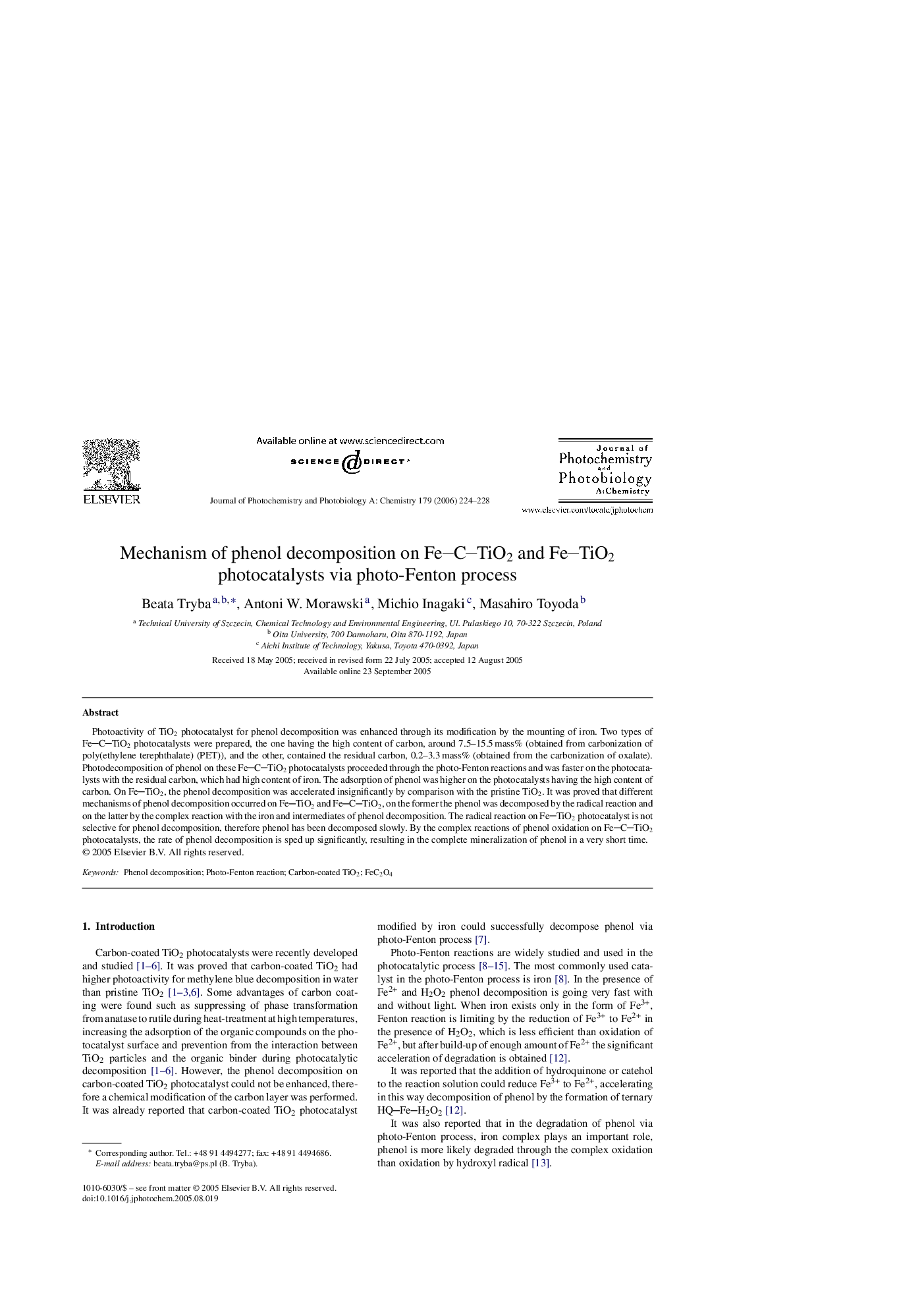| Article ID | Journal | Published Year | Pages | File Type |
|---|---|---|---|---|
| 28754 | Journal of Photochemistry and Photobiology A: Chemistry | 2006 | 5 Pages |
Photoactivity of TiO2 photocatalyst for phenol decomposition was enhanced through its modification by the mounting of iron. Two types of FeCTiO2 photocatalysts were prepared, the one having the high content of carbon, around 7.5–15.5 mass% (obtained from carbonization of poly(ethylene terephthalate) (PET)), and the other, contained the residual carbon, 0.2–3.3 mass% (obtained from the carbonization of oxalate). Photodecomposition of phenol on these FeCTiO2 photocatalysts proceeded through the photo-Fenton reactions and was faster on the photocatalysts with the residual carbon, which had high content of iron. The adsorption of phenol was higher on the photocatalysts having the high content of carbon. On FeTiO2, the phenol decomposition was accelerated insignificantly by comparison with the pristine TiO2. It was proved that different mechanisms of phenol decomposition occurred on FeTiO2 and FeCTiO2, on the former the phenol was decomposed by the radical reaction and on the latter by the complex reaction with the iron and intermediates of phenol decomposition. The radical reaction on FeTiO2 photocatalyst is not selective for phenol decomposition, therefore phenol has been decomposed slowly. By the complex reactions of phenol oxidation on FeCTiO2 photocatalysts, the rate of phenol decomposition is sped up significantly, resulting in the complete mineralization of phenol in a very short time.
